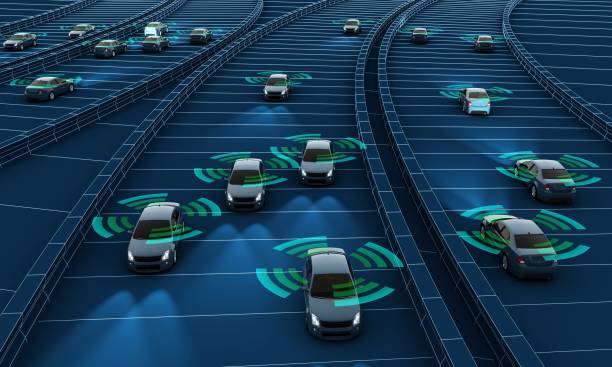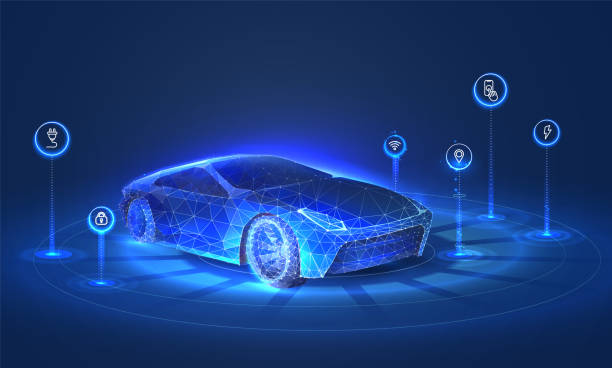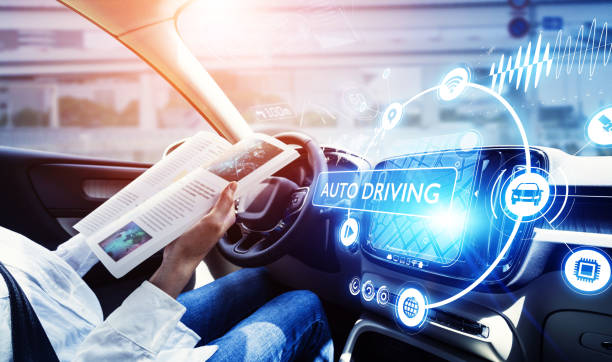Introduction
The automotive industry is undergoing a transformative shift with the emergence of autonomous vehicles. Among the various challenges that autonomous vehicles seek to address, efficient and reliable parking solutions remain a focal point. The integration of cutting-edge technologies has led to the development of innovative autonomous vehicle parking solutions, paving the way for a future where parking is no longer a hassle but a seamless experience. In this comprehensive analysis, we explore the nuances of patenting innovations in autonomous vehicle parking solutions. From the integration of advanced sensors and artificial intelligence to the complexities of navigating regulatory landscapes, this article delves into the challenges, strategies, and importance of patent protection in shaping the future of autonomous vehicle parking technology.

The Evolution of Autonomous Vehicle Parking Solutions
The evolution of autonomous vehicle parking solutions traces a remarkable trajectory from basic parking assist features to sophisticated self-parking capabilities. Early innovations in parking solutions focused on sensor-based technologies that enabled vehicles to detect and avoid obstacles during parking maneuvers. With advancements in artificial intelligence and machine learning, autonomous vehicles have evolved to incorporate more intricate parking strategies, such as parallel parking, perpendicular parking, and even multi-story parking. The convergence of sensor technologies, data analytics, and real-time communication systems has laid the groundwork for intelligent parking solutions that optimize space utilization, minimize parking time, and enhance overall user experience. Understanding this evolutionary journey is crucial for innovators seeking to patent their advancements in autonomous vehicle parking technology.
Challenges in Patenting Autonomous Vehicle Parking Innovations
Patenting innovations in autonomous vehicle parking solutions presents a series of complex challenges that necessitate a comprehensive understanding of technological advancements and legal intricacies. From addressing patent eligibility requirements to navigating the landscape of prior art, inventors and patent attorneys must grapple with the complexities of defining patent claims that are both comprehensive and distinct. Moreover, the competitive nature of the automotive industry underscores the importance of developing strategies to safeguard intellectual property, particularly in the context of emerging parking technologies. As the regulatory framework continues to evolve, ensuring compliance with legal standards and addressing potential infringement risks emerge as critical considerations in the patenting process.
Key Technological Components of Autonomous Vehicle Parking Solutions
Autonomous vehicle parking solutions rely on a sophisticated integration of various key technological components, each playing a crucial role in enabling seamless and efficient parking operations. These components include advanced sensor technologies, artificial intelligence (AI) algorithms, communication systems, and infrastructure support.
Sensor Technologies
Autonomous parking heavily relies on a combination of sensors such as LiDAR, radar, ultrasonic sensors, and cameras. LiDAR sensors provide precise 3D mapping of the surroundings, radar aids in detecting obstacles and monitoring the vehicle’s proximity to objects, while ultrasonic sensors assist in measuring distances for accurate maneuvering during parking operations. Cameras offer real-time visual data that aids in accurate positioning and detection of surrounding objects.
Artificial Intelligence Algorithms
AI algorithms serve as the backbone of autonomous parking systems, enabling vehicles to process complex data from various sensors, interpret parking environments, and make informed decisions. Machine learning algorithms facilitate predictive modeling, enabling vehicles to anticipate and respond to dynamic parking scenarios, improving parking efficiency and safety.
Communication Systems
Effective communication systems, including vehicle-to-vehicle (V2V) and vehicle-to-infrastructure (V2I) communication, play a vital role in facilitating seamless coordination and data exchange between autonomous vehicles and parking infrastructure. These systems enable vehicles to communicate with each other and with smart parking infrastructure, enhancing parking efficiency and optimizing traffic flow within parking facilities.
Infrastructure Support
The infrastructure supporting autonomous parking solutions includes smart parking structures equipped with guiding technologies such as LED indicators, beacons, and guiding lines to assist vehicles in navigating parking spaces. Additionally, integrated software systems manage parking reservations, guide vehicles to available parking spaces, and provide real-time updates to drivers, enhancing user experience and optimizing parking space utilization.
The synergy of these key technological components is instrumental in ensuring the precision, efficiency, and safety of autonomous vehicle parking solutions, revolutionizing traditional parking experiences and paving the way for a future where parking is seamlessly integrated into the overall mobility ecosystem.

The Role of Data Analytics and Machine Learning in Autonomous Parking
Data analytics and machine learning algorithms play a pivotal role in autonomous vehicle parking solutions, facilitating data-driven decision-making and predictive modeling to optimize parking efficiency. By leveraging historical parking data, machine learning models can predict parking availability, analyze user preferences, and dynamically adjust parking strategies to accommodate varying environmental conditions. The integration of data analytics not only enhances the overall performance of autonomous parking systems but also contributes to the development of intelligent parking management platforms that cater to the evolving needs of smart cities and urban landscapes. Recognizing the significance of data-driven innovations is essential for inventors seeking to patent autonomous parking solutions that prioritize efficiency, convenience, and sustainability.
Navigating Intellectual Property Rights and Patent Enforcement
Navigating intellectual property rights and enforcing patents in the domain of autonomous vehicle parking solutions demands a strategic approach that accounts for the intricacies of the global automotive market. Collaborating with patent attorneys well-versed in intellectual property law is instrumental in drafting robust patent claims, conducting thorough patent searches, and mitigating infringement risks. Moreover, understanding the nuances of international patent laws and regulations is imperative for securing comprehensive patent protection across diverse geographic regions. By adopting a proactive approach to patent enforcement and engaging in continuous monitoring of patent landscapes, inventors can safeguard their intellectual property rights and foster innovation in the realm of autonomous vehicle parking solutions.
Impact of Autonomous Parking Innovations on Urban Mobility and Infrastructure
The impact of autonomous parking innovations extends beyond individual vehicles, significantly influencing urban mobility and transforming traditional parking infrastructures. These advancements play a pivotal role in addressing some of the key challenges faced by modern cities, including traffic congestion, limited parking space, and environmental concerns. The integration of autonomous parking solutions has the following notable impacts on urban mobility and infrastructure:
1. Reduced Traffic Congestion
Autonomous parking solutions optimize parking operations, enabling vehicles to navigate parking spaces more efficiently and reducing the time spent searching for available parking spots. This, in turn, minimizes traffic congestion in urban areas, enhancing overall traffic flow and reducing carbon emissions associated with idle vehicles.
2. Optimized Space Utilization
By utilizing advanced sensors and AI algorithms, autonomous parking systems can maximize parking space utilization within crowded urban environments. Smart parking technologies guide vehicles to available parking spaces, ensuring optimal utilization of parking structures and reducing the need for expansive parking lots, thus freeing up space for other urban development initiatives.
3. Enhanced User Experience
Autonomous parking innovations enhance the overall user experience by simplifying parking procedures and reducing the stress associated with finding suitable parking spaces in busy urban areas. Real-time updates and guidance provided by autonomous parking systems improve convenience and accessibility for drivers, fostering a more user-friendly and efficient urban mobility experience.
4. Integration with Smart City Initiatives
Autonomous parking technologies integrate seamlessly with broader smart city initiatives, contributing to the development of interconnected urban ecosystems. By leveraging data analytics and communication systems, these innovations facilitate the creation of intelligent parking management platforms that align with smart city objectives, promoting sustainable urban development and enhancing overall quality of life for city residents.
5. Environmental Sustainability
The optimization of parking operations through autonomous parking solutions contributes to environmental sustainability by reducing fuel consumption and carbon emissions associated with inefficient parking practices. By minimizing the time spent idling in search of parking spaces, autonomous parking solutions promote eco-friendly mobility practices, aligning with global efforts to mitigate the environmental impact of urban transportation systems.
6. Infrastructure Planning and Design
The integration of autonomous parking innovations prompts a reevaluation of traditional infrastructure planning and design approaches, emphasizing the need for adaptable and technology-driven urban development strategies. This encourages city planners and policymakers to incorporate intelligent parking infrastructure into urban planning frameworks, fostering the creation of future-ready cities that prioritize sustainable mobility and efficient resource utilization.
By recognizing the multifaceted impacts of autonomous parking innovations on urban mobility and infrastructure, city planners, policymakers, and technology developers can collaborate to create holistic urban development strategies that embrace technological advancements and promote sustainable, efficient, and user-centric transportation ecosystems.

Strategies for Patenting Autonomous Vehicle Parking Solutions
Developing effective strategies for patenting autonomous vehicle parking solutions necessitates a comprehensive approach that integrates technological expertise, legal acumen, and strategic planning. The following strategies can guide innovators and researchers in navigating the complexities of the patenting process for autonomous parking technologies:
1. Comprehensive Prior Art Analysis
Conduct a thorough analysis of existing patents and technical literature to identify potential white spaces and opportunities for innovation within the autonomous parking domain. This analysis should encompass a global perspective to account for diverse patent landscapes and technological advancements in different geographic regions.
2. Precise Patent Claims Drafting
Craft clear and precise patent claims that articulate the unique features and functionalities of autonomous parking systems. Emphasize the technological intricacies and innovative aspects that differentiate the proposed solutions from existing technologies, ensuring that the patent claims are both comprehensive and distinct within the competitive automotive market.
3. Proactive Patent Enforcement
Monitor the patent landscape regularly to identify potential infringement activities and enforce patent rights proactively. Engage in continuous monitoring of market trends and technological advancements to anticipate potential challenges and assess the viability of enforcing patent claims within dynamic market conditions.
4. Global Patent Protection
Develop a robust intellectual property portfolio by seeking patent protection in key global markets, considering the diverse legal frameworks and regulatory requirements governing intellectual property rights in different jurisdictions. Collaborate with experienced patent attorneys and legal advisors to navigate the intricacies of international patent laws and ensure comprehensive protection of autonomous parking innovations.
5. Collaboration and Partnerships
Foster collaboration and partnerships with industry stakeholders, research institutions, and technology developers to promote knowledge sharing and foster a culture of innovation within the autonomous parking domain. Engage in collaborative research initiatives and joint development programs to leverage collective expertise and resources, thereby strengthening the overall intellectual property portfolio and enhancing the competitive position within the automotive market.
6. Continuous Innovation and Adaptation
Foster a culture of continuous innovation and adaptation to remain agile and responsive to emerging market trends and technological advancements. Embrace a forward-thinking approach that integrates feedback from users, industry experts, and regulatory authorities to drive iterative improvements and innovations in autonomous parking solutions, thereby reinforcing the intellectual property portfolio and maintaining a competitive edge within the rapidly evolving automotive landscape.
By integrating these strategic approaches into the patenting process, innovators and researchers can navigate the complex landscape of autonomous vehicle parking solutions, establish a robust intellectual property foundation, and contribute to the advancement of innovative and efficient parking technologies for the future of urban mobility.
The Future of Autonomous Vehicle Parking Technology
As autonomous vehicle technology continues to evolve, the future of autonomous parking solutions holds the promise of seamless, intuitive, and sustainable parking experiences. The integration of emerging technologies, including 5G connectivity, edge computing, and advanced robotics, is poised to further enhance the capabilities of autonomous parking systems, ushering in a new era of intelligent mobility and urban infrastructure. Innovators and industry leaders must remain agile and adaptive, continuously innovating and patenting novel solutions that redefine the boundaries of autonomous parking technology. By embracing a forward-thinking approach that combines technological ingenuity with ethical considerations, inventors can shape the future of autonomous vehicle parking, driving positive transformations in the automotive landscape and urban mobility ecosystems.
Conclusion
The evolution of autonomous vehicle parking solutions represents a paradigm shift in the automotive industry, redefining traditional notions of parking and urban mobility. The patenting of innovations in autonomous parking technology necessitates a nuanced understanding of technological advancements, legal complexities, and market dynamics. By leveraging comprehensive patenting strategies that emphasize collaboration, innovation, and compliance with ethical and regulatory standards, inventors can contribute to the development of autonomous parking solutions that prioritize efficiency, safety, and sustainability. Looking ahead, the continued integration of autonomous parking technologies is poised to transform urban landscapes, enhancing the quality of life and reimagining the future of mobility on a global scale.

